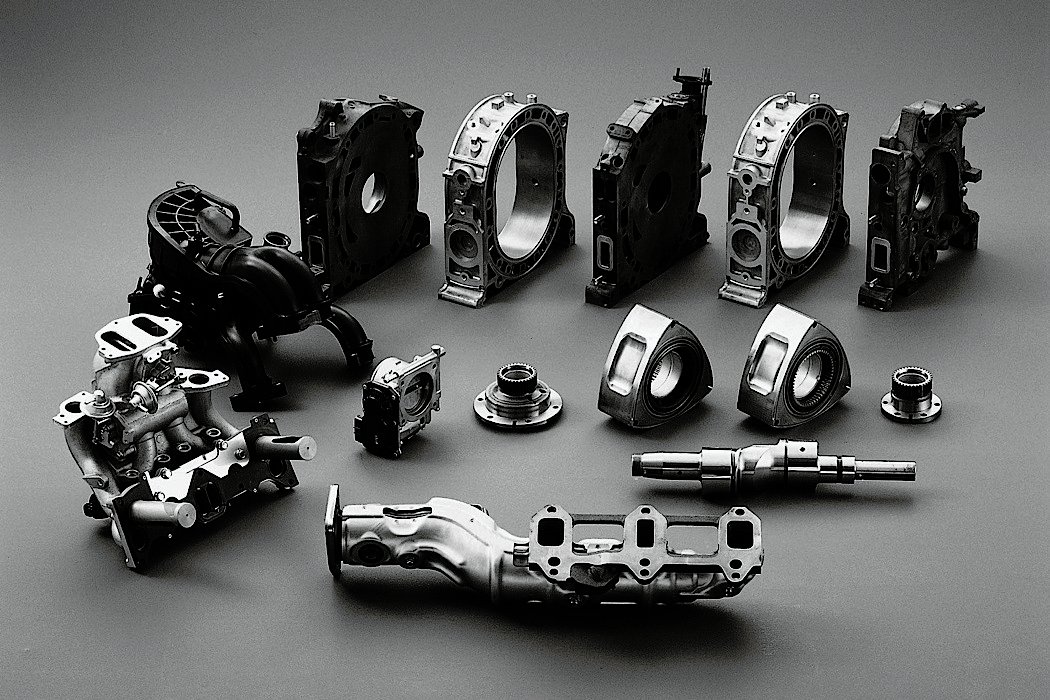Rotary Engines
What is a Rotary Engine?
A rotary engine is an internal combustion engine, but it works in a completely different way than the conventional piston engine. Mazda Rx-7 and Rx-8 use the rotary engine, they are also prepared to bring back the rotary engine in new RX-9 or RX vision.
It was first developed in 1889 using compressed air. The first production 3-cylinder rotary engine was designed by Fay Oliver Farwell in 1898, then very shortly 5-cylinder rotary engines came around 1906. These rotary engines are not as popular as piston engine.
How does it Work?
In a normal piston engine the cylinder alternately does four different jobs intake, compress, combustion and exhaust. A rotary engine does the same four jobs, but each one happens in its own housing section. It is like having a dedicated cylinder for each of the jobs.
It has a triangular-shaped rotor instead of the piston and a housing reminiscent of an oval instead of a cylinder. The same four-stroke happens inside this housing.
Intake
It is the first step, as the rotor moves within the housing, a small pocket of air expands into larger pockets thus creating a vacuum. This vacuum sucks the air and fuel mixture from the intake ports and then drawn to the combustion chamber.
Compression
The rotor continues to rotate, compressing the air-fuel mixture against the flat side of the rotor housing.
Combustion
There are two sparks plugs that ignite the air-fuel mixture which speeds up the combustion process and ensures the fuel is burnt efficiently and forced the rotor to continue to rotate.
Exhaust
Similar to the intake stroke, the rotor moves until exhaust ports are accessible, and the exhaust gases at high pressure are then forced out as the rotor closes off the housing.
The best part of the rotary engine is all the above process is happening inside the housing simultaneously. This results in smooth power delivery and a large amount of power in a small package
Advantages
Weight-to-Power
The size of the engine in Mazda Rx-7 was only 1 cubic foot of volume. This 13B engine with 1308 cc and producing 280 bhp. A small engine means better power to weight ratio.
Fewer Moving Parts
If the engine is simpler and has few components it is easy to detect and problem and a rotary engine reduce the number of parts used for combustion to occur. Only 3 components are used (Rotor, Housing, Output Shaft) in the two-rotor motor.
Smooth and High Revving
As the process of intake, compression, combustion and exhaust is happening simultaneously there is the smooth power delivery. There are no valves or pistons hence high revving ability without the concern of the valve float.
Disadvantages
Low Thermal Efficiency
Due to the uniquely shaped combustion chamber, thermal efficiency is relatively lower when compared to the piston-cylinder engine. This often allows escaping the unburnt fuel from the exhaust which causes a backfire.
Oil is burnt more
The rotary engine burns more oil. There are small holes in the housing which injects oil directly into the combustion chamber for lubrication and sealing of the edges. This means the driver must regularly check the oil levels to keep the rotor well lubricated. More oil burns mean bad stuff coming out of the tailpipe, which is bad for the environment.
Rotor Sealing
Sealing is a major issue that affects emission. The temperature inside the housing is different in different sections. The simultaneous occurrence of the intake and combustion causes temperature variants inside the housing. This means the intake section is relatively cool compared to the combustion section. There is also a coolant jacket on the outer of the housing which helps to manage the heat load.
Sealing off the gases in that section is difficult. For sealing, we have apex seals, face seals and side seals to block the gases. These seals reduce the problem but do not fully diminish it.
Emissions
These are the major drawbacks of the rotary engine. The combination of inefficient combustion, inherent oil burning and sealing challenge result in a poor engine which is not suitable for today’s emission standards.
2011 RX-8 was the final car with a rotary engine. RX-8 was unable to meet the euro 5 emission regulations and thus was no longer sold in Europe.


